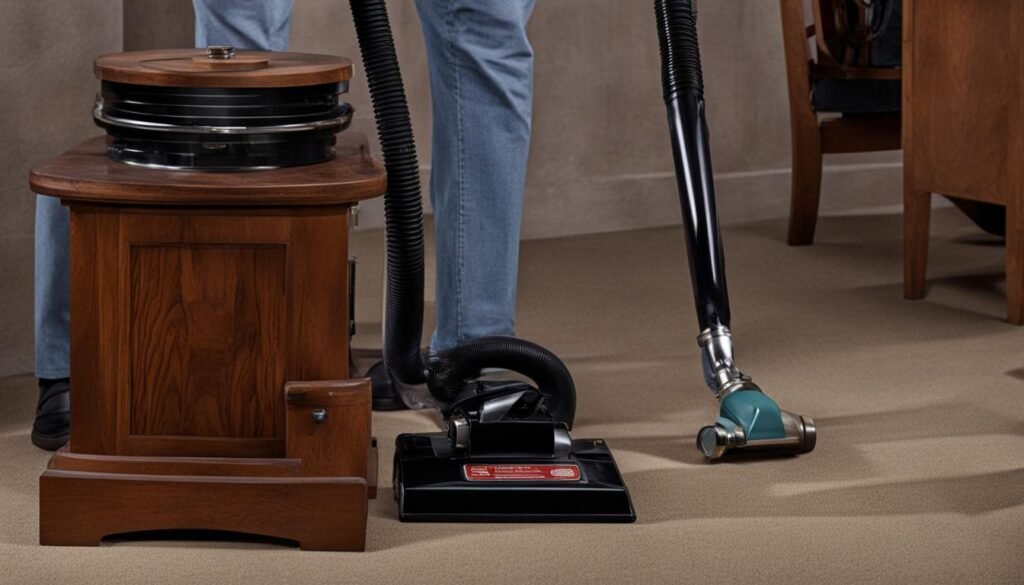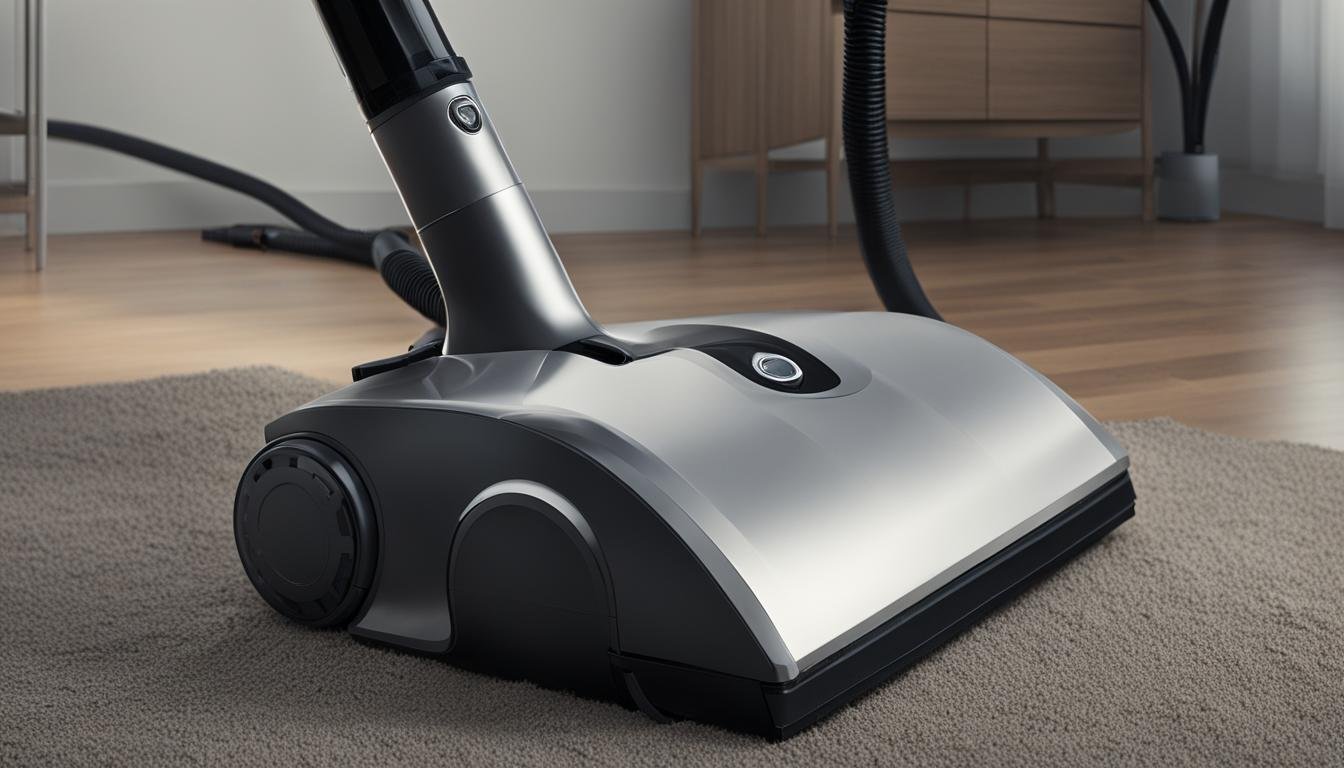The invention of the vacuum cleaner revolutionized household cleaning. In 1901, engineer Hubert Cecil Booth introduced the first successful vacuum cleaner. Inspired by a machine he saw at a demonstration, Booth created a device that used suction to remove dirt from carpets. His invention, known as “Puffing Billy,” was initially large and pulled by a horse. However, the concept of using suction to clean quickly gained popularity, and smaller, more portable vacuum cleaners were soon developed. James B. Kirby, in 1906, introduced a vacuum cleaner that used water instead of a filter for dirt separation. This design laid the foundation for the modern-day vacuum cleaner. Over the years, vacuum cleaners have become more advanced, incorporating technologies such as cyclonic dirt separation and robot functionalities.
Key Innovations in Vacuum Cleaner History
The vacuum cleaner has seen several key innovations throughout its history. The first manual vacuum cleaner, known as a “carpet sweeper,” was invented by Daniel Hess in 1860. It used a rotating brush and bellows to generate suction. In 1905, Walter Griffiths developed a portable vacuum cleaner that could be easily carried around. James Murray Spangler, a janitor, invented the first portable electric vacuum cleaner in 1907. He sold the patent to William Henry Hoover, who further refined the design and introduced the first upright vacuum cleaner in 1926. These innovations paved the way for modern vacuum cleaner designs we use today.
Vacuum Cleaner Evolution and Popularization
After the initial inventions, vacuum cleaners went through further evolution and became more accessible to the general public. The vacuum cleaner transitioned from being a luxury item to a household staple after the Second World War. With technological advancements and improvements in production methods, vacuum cleaners became more affordable and widely available. Today, there is a wide variety of vacuum cleaner types and models, ranging from handheld battery-powered devices to industrial-sized cleaners capable of handling large spills. Vacuum cleaner companies such as Hoover and Electrolux played significant roles in popularizing and perfecting the technology.
The Future of Vacuum Cleaners
As technology continues to advance, the future of vacuum cleaners looks promising. There are ongoing developments in smart appliances and robotic technologies, which have already led to the introduction of autonomous robotic vacuum cleaners. These new innovations aim to provide more convenience and efficiency in cleaning tasks. Additionally, research and development efforts are focused on improving energy efficiency and noise reduction in vacuum cleaners. While the technology continues to evolve, the demand for vacuum cleaners remains constant as modern households strive for cleanliness and hygiene.
Key Takeaways:
- The vacuum cleaner was invented by Hubert Cecil Booth in 1901, revolutionizing household cleaning.
- Key innovations in vacuum cleaner history include the introduction of portable designs, electric power, and upright models.
- Vacuum cleaners have evolved from luxury items to household staples due to technological advancements and improved accessibility.
- The future of vacuum cleaners includes smart appliances, robotic technologies, and focus on energy efficiency and noise reduction.
- Vacuum cleaner companies such as Hoover and Electrolux have played significant roles in popularizing and perfecting the technology.
Key Innovations in Vacuum Cleaner History
The history of the vacuum cleaner is marked by several key innovations that have shaped the devices we use today. From early manual designs to portable electric models, these inventions have revolutionized the way we clean our homes.
Daniel Hess and the Carpet Sweeper
One notable pioneer in vacuum cleaner history is Daniel Hess, who invented the first manual vacuum cleaner in 1860. Known as the “carpet sweeper,” this device featured a rotating brush and bellows to generate suction. While it may seem simple by today’s standards, Hess’s invention laid the foundation for future vacuum cleaner designs.
Walter Griffiths and the Portable Vacuum Cleaner
In 1905, Walter Griffiths took vacuum cleaning to the next level by introducing the first portable vacuum cleaner. Unlike cumbersome and inconvenient predecessors, Griffiths’ design allowed users to easily carry the cleaner around their homes. This innovation brought convenience and efficiency to the vacuuming process, making it more accessible to a wider audience.
James Murray Spangler and William Henry Hoover
Another significant advancement came in 1907 when James Murray Spangler, a janitor, invented the first portable electric vacuum cleaner. Spangler’s design featured a motor-driven fan that created suction to collect dirt and dust. Recognizing the potential of this invention, Spangler sold the patent to William Henry Hoover, who further refined the design and introduced the first upright vacuum cleaner in 1926.
These key innovations paved the way for the modern vacuum cleaner as we know it today. With their contributions, Hess, Griffiths, Spangler, and Hoover revolutionized home cleaning and made vacuum cleaners a staple in households worldwide.
| Year | Inventor | Invention |
|---|---|---|
| 1860 | Daniel Hess | Carpet Sweeper |
| 1905 | Walter Griffiths | Portable Vacuum Cleaner |
| 1907 | James Murray Spangler | Portable Electric Vacuum Cleaner |
| 1926 | William Henry Hoover | Upright Vacuum Cleaner |
Vacuum Cleaner Evolution and Popularization
After the initial inventions, vacuum cleaners went through further evolution and became more accessible to the general public. The birthplace of the vacuum cleaner dates back to 1901 when engineer Hubert Cecil Booth introduced the first successful vacuum cleaner, known as “Puffing Billy”. Inspired by a machine he saw at a demonstration, Booth’s invention revolutionized household cleaning by using suction to remove dirt from carpets.
Over the years, vacuum cleaners have undergone significant advancements and improvements. It was not until after the Second World War that the vacuum cleaner transitioned from a luxury item to a household staple. With technological progress and production enhancements, vacuum cleaners became more affordable and widely available.
Today, there is a wide variety of vacuum cleaner types and models. From handheld battery-powered devices to industrial-sized cleaners capable of handling large spills, vacuum cleaners cater to various cleaning needs. Major companies such as Hoover and Electrolux played essential roles in popularizing and perfecting the technology.
Let’s take a closer look at the vacuum cleaner’s evolution and popularization:
The Rise of the Vacuum Cleaner Industry
After Hubert Cecil Booth’s invention, the vacuum cleaner industry gained momentum. Inventors and manufacturers began experimenting with designs and technologies to improve cleaning efficiency and user convenience.
“Innovation is the key to success in the vacuum cleaner industry.”
James B. Kirby made significant contributions to the vacuum cleaner’s development when he introduced a vacuum cleaner that used water instead of a filter for dirt separation in 1906. This design laid the foundation for the modern-day vacuum cleaner. The introduction of electric vacuum cleaners further revolutionized the industry.
The Impact of World War II
During World War II, the vacuum cleaner industry faced challenges due to resource scarcity. However, the war indirectly led to the popularization of vacuum cleaners. Women who joined the workforce during the war had less time for household chores, creating a demand for efficient cleaning solutions.
“The vacuum cleaner became a time-saving essential for post-war households.”
After the war, as post-war economies flourished, technological advancements and mass production made vacuum cleaners more affordable. This accessibility led to a surge in demand, making vacuum cleaners a common item in households worldwide.
The Modern Vacuum Cleaner Market
Today, the vacuum cleaner market is highly competitive, with numerous brands, models, and features available to consumers. Advances in technology have resulted in various types of vacuum cleaners:
- Upright vacuum cleaners
- Canister vacuum cleaners
- Stick vacuum cleaners
- Handheld vacuum cleaners
- Robot vacuum cleaners

The Future of Vacuum Cleaners
As technology continues to evolve, the future of vacuum cleaners holds exciting possibilities. Research and development efforts are focused on creating smarter, more efficient cleaning solutions. The introduction of autonomous robotic vacuum cleaners has already transformed the cleaning landscape.
“The future of vacuum cleaners lies in smarter, more automated devices.”
Scientists and engineers are working on enhancing energy efficiency, noise reduction, and incorporating advanced features such as machine learning and artificial intelligence. The aim is to create vacuum cleaners that seamlessly integrate into smart homes and provide hassle-free cleaning experiences.
| Vacuum Cleaner Types | Main Features |
|---|---|
| Upright Vacuum Cleaners | – Easy maneuverability – Powerful suction – Ideal for carpeted areas |
| Canister Vacuum Cleaners | – Versatile cleaning capabilities – Lightweight and portable – Suitable for various floor types |
| Stick Vacuum Cleaners | – Slim and lightweight design – Convenient for quick cleanups – Easy storage |
| Handheld Vacuum Cleaners | – Compact and portable – Ideal for spot cleaning – Useful for cleaning vehicles |
| Robot Vacuum Cleaners | – Autonomous cleaning – Programmable features – Suitable for busy individuals |
The Future of Vacuum Cleaners
As technology continues to advance, the future of vacuum cleaners looks promising. With ongoing developments in smart appliances and robotic technologies, we have already witnessed the introduction of autonomous robotic vacuum cleaners. These innovative devices aim to provide more convenience and efficiency in our cleaning tasks.
Robotic vacuum cleaners, equipped with intelligent sensors and navigation systems, can autonomously navigate through our homes, cleaning carpets and floors without any human intervention. They can be scheduled to clean at specific times, allowing us to focus on other important tasks.
Moreover, research and development efforts are focused on improving the energy efficiency of vacuum cleaners. In the future, we can expect vacuum cleaners that consume less power while delivering the same or even better cleaning performance. Noise reduction is also a priority, ensuring a quieter cleaning experience for households.
While technology continues to evolve, one thing remains constant: the demand for vacuum cleaners. As modern households strive for cleanliness and hygiene, vacuum cleaners are indispensable tools in maintaining a healthy living environment. With the constant innovation in technology, we can look forward to more advanced and efficient vacuum cleaners in the future.
FAQ
Where does the vacuum cleaner come from?
The vacuum cleaner was first introduced in 1901 by engineer Hubert Cecil Booth.
Who invented the vacuum cleaner?
The first successful vacuum cleaner was invented by Hubert Cecil Booth in 1901.
What is the origin of the vacuum cleaner?
The vacuum cleaner was initially developed by Hubert Cecil Booth in Britain.
How did the vacuum cleaner evolve over time?
The vacuum cleaner has gone through various innovations and refinements since its invention, leading to the development of smaller, portable, and more advanced models.
What are the key innovations in vacuum cleaner history?
The vacuum cleaner has seen key innovations such as the introduction of the first manual carpet sweeper by Daniel Hess in 1860, the portable vacuum cleaner by Walter Griffiths in 1905, and the first portable electric vacuum cleaner by James Murray Spangler in 1907.
How did the vacuum cleaner become popular?
The vacuum cleaner became more accessible to the general public after World War II, thanks to technological advancements, improved production methods, and the efforts of companies like Hoover and Electrolux.
What is the future of vacuum cleaners?
The future of vacuum cleaners holds advancements in smart appliances, robotic technologies, energy efficiency, and noise reduction, providing greater convenience and efficiency in cleaning tasks.





Leave a Reply